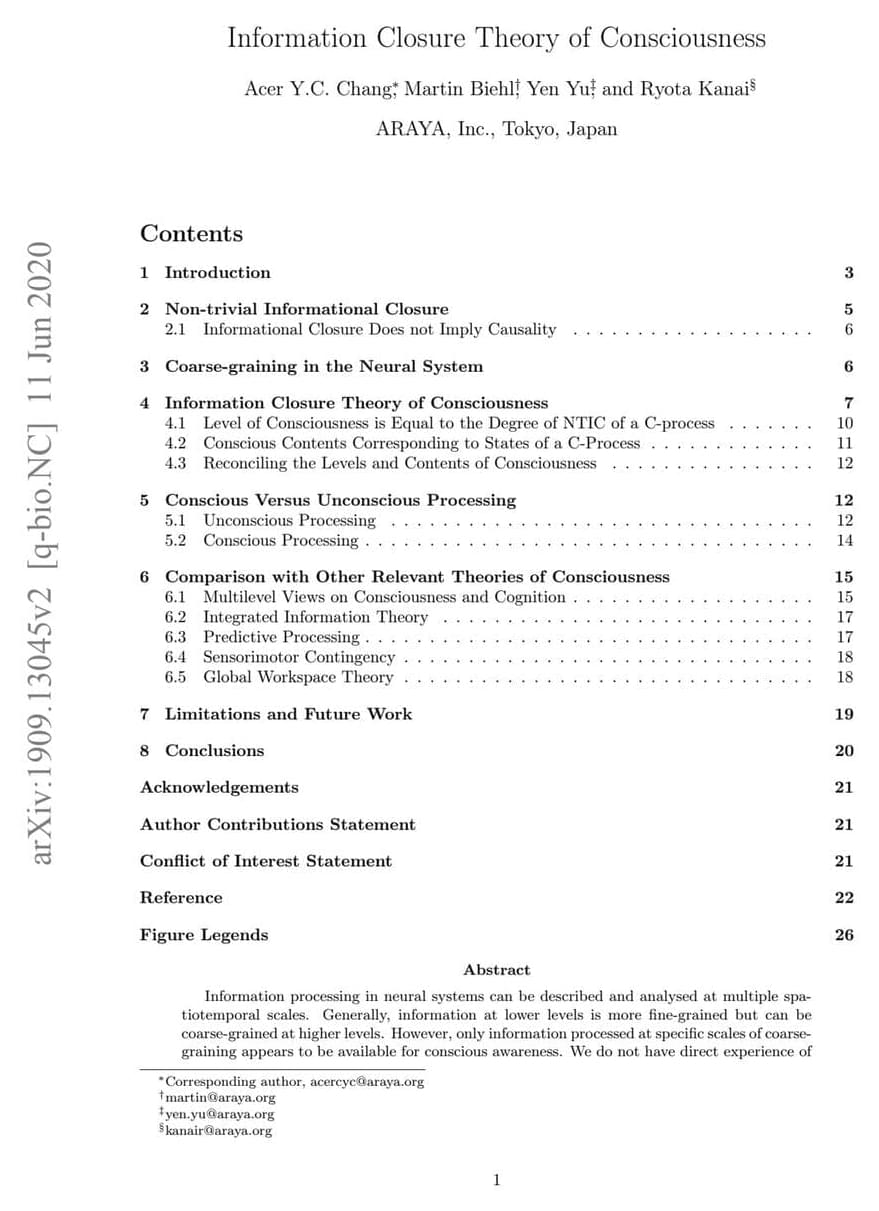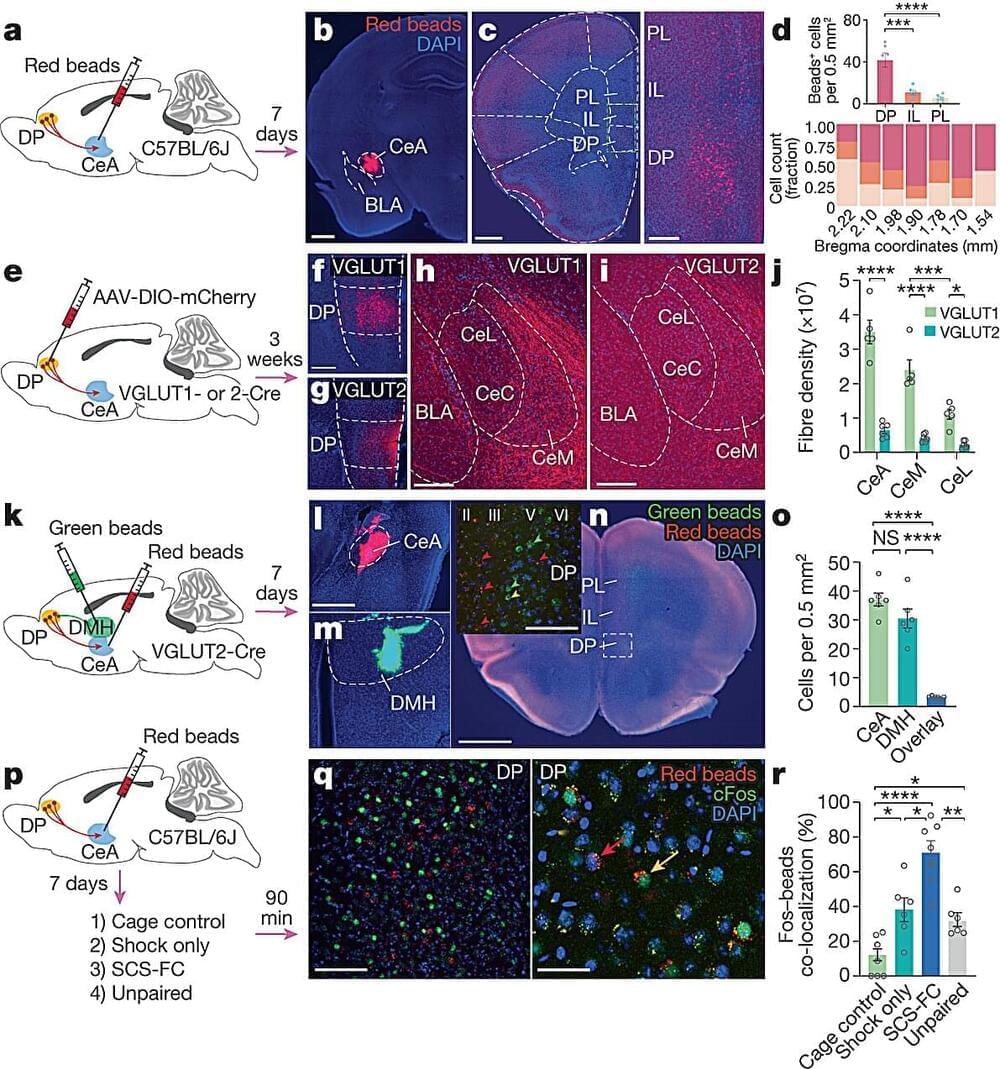Here’s what it takes to pause the perpetual motion of particles.






In a vacuum like space, the speed of light is just over 186,280 miles per second. Scientists have now shown it’s possible to slow it down to zero miles per second without sacrificing its brightness, regardless of its frequency or bandwidth.


Survival requires the selection of appropriate behaviour in response to threats, and dysregulated defensive reactions are associated with psychiatric illnesses such as post-traumatic stress and panic disorder.
Scientists have discovered a new neural pathway involved in how the brain encodes the transition to high-intensity fear response behaviors that are necessary for survival, according to a recent study published in Nature.
Jones Parker, Ph.D., assistant professor of Neuroscience, of Pharmacology and of Psychiatry and Behavioral Sciences, was a co-author of the study.
In mammals, the amygdala is involved in generating survival responses and transitioning to different high-intensity fear behaviors such as freezing or immobility (avoidance behavior) to escaping (flight behavior) in response to perceived threats.
A genetic marker linked to premature aging was reversed in children with obesity during a six-month diet and exercise program, according to a recent study led by the Stanford School of Medicine.
Children’s telomeres — protective molecular “caps” on the chromosomes — were longer during the weight management program, then were shorter again in the year after the program ended, the study found. The research was published last month in Pediatric Obesity.
Like the solid segment at the end of a shoelace, telomeres protect the ends of chromosomes from fraying. In all people, telomeres gradually shorten with aging. Various conditions, including obesity, cause premature shortening of the telomeres.

Autoimmune disease occurs from the body’s immune system attacking its healthy cells. Unfortunately, the mechanism that would normally prevent autoimmunity is not present in some individuals. T cells are the immune cell population responsible for killing or lysing invading pathogens. In the context of autoimmunity, T cells attack and lyse healthy cells. The thymus gland educates or prepares T cells to become activated and target foreign pathogens. T cells are exposed to different molecules and surface markers which further train these cells on how to respond when they come into contact with foreign markers. Autoimmune disorders are rare and can often be detected in children. However, there are limited treatment options, and a cure has not been found. Researchers are currently working to better treat autoimmune disorders and improve the quality of life in patients.
A recent article published in Nature, by a team led by Dr. Thomas Korn, reported a previously unknown mechanism underlying autoimmune disease. Korn is a Professor of Experimental Nueroimmunology at the Technical University of Munich (TUM) and Principal Investigator at the Maximilian University of Munich (LMU). His lab focuses on T cell biology and the underlying mechanisms of autoimmune disorders. Korn and others demonstrated that another immune cell population, B cells, aid in T cell education in the thymus gland. Korn and others point out that B cells are part of T cell development and play a critical role in autoimmune disorder.
Researchers used both animal models and human tissue samples to conduct their research to investigate T cell development. The autoimmune disorder Korn and his team used as a model is known as neuromyelitis optica, which is similar to multiple sclerosis (MS). Researchers chose this specific model due to the well-known fact that T cells respond to the protein AQP4 in this autoimmune disorder. Interestingly, AQP4 is highly expressed in the nervous system, which becomes the target of autoimmunity. Researchers discovered that B cells also express AQP4, which present this protein to the T cells in the thymus. Interestingly, if the B cells did not express AQP4, then T cells would not become reactive to the surface protein and target healthy nervous system cells. Epithelial cells also expressed the AQP4 protein and resulted in the same autoimmune reaction. However, B cells were found to significantly impact T cell development compared to other cells in the thymus.